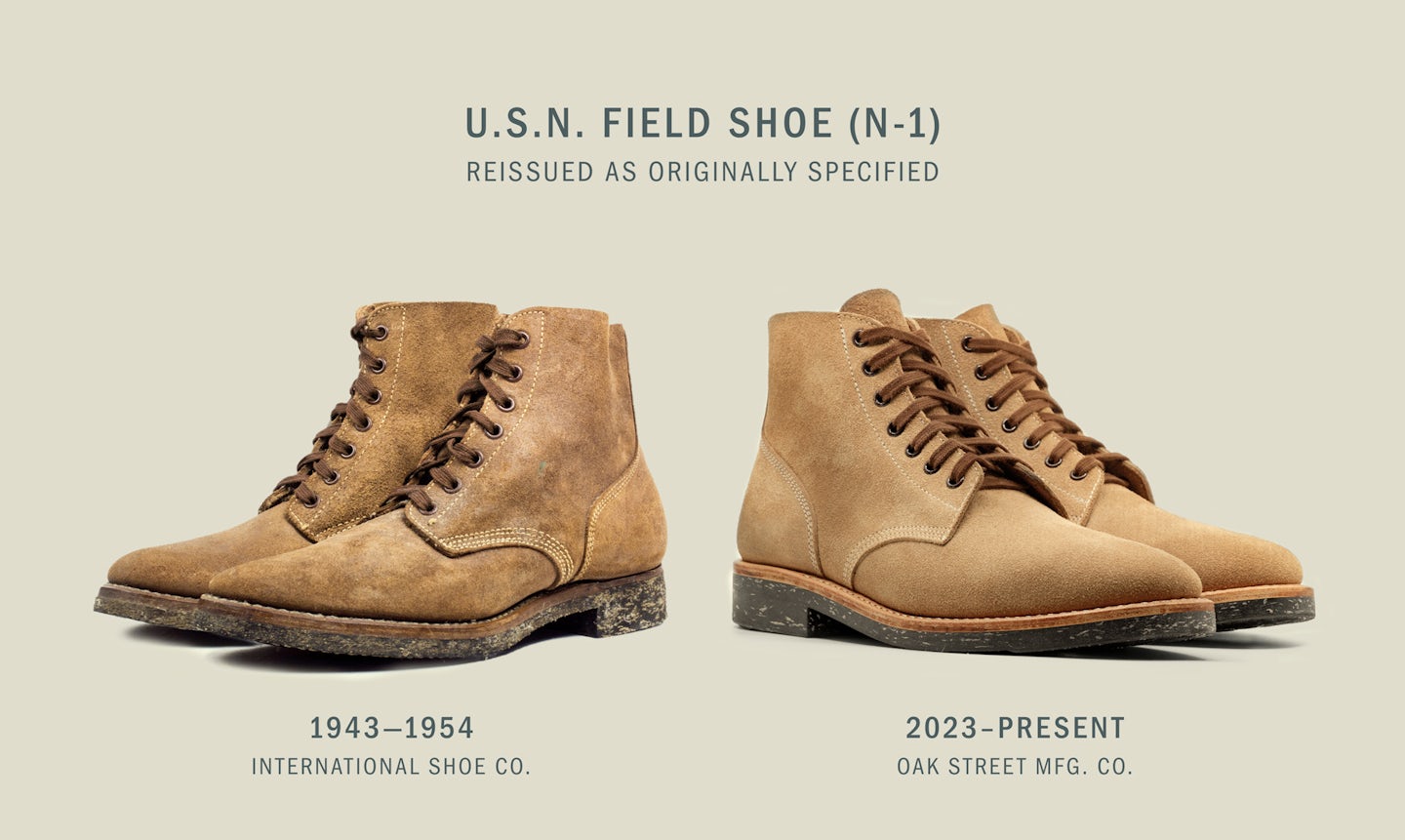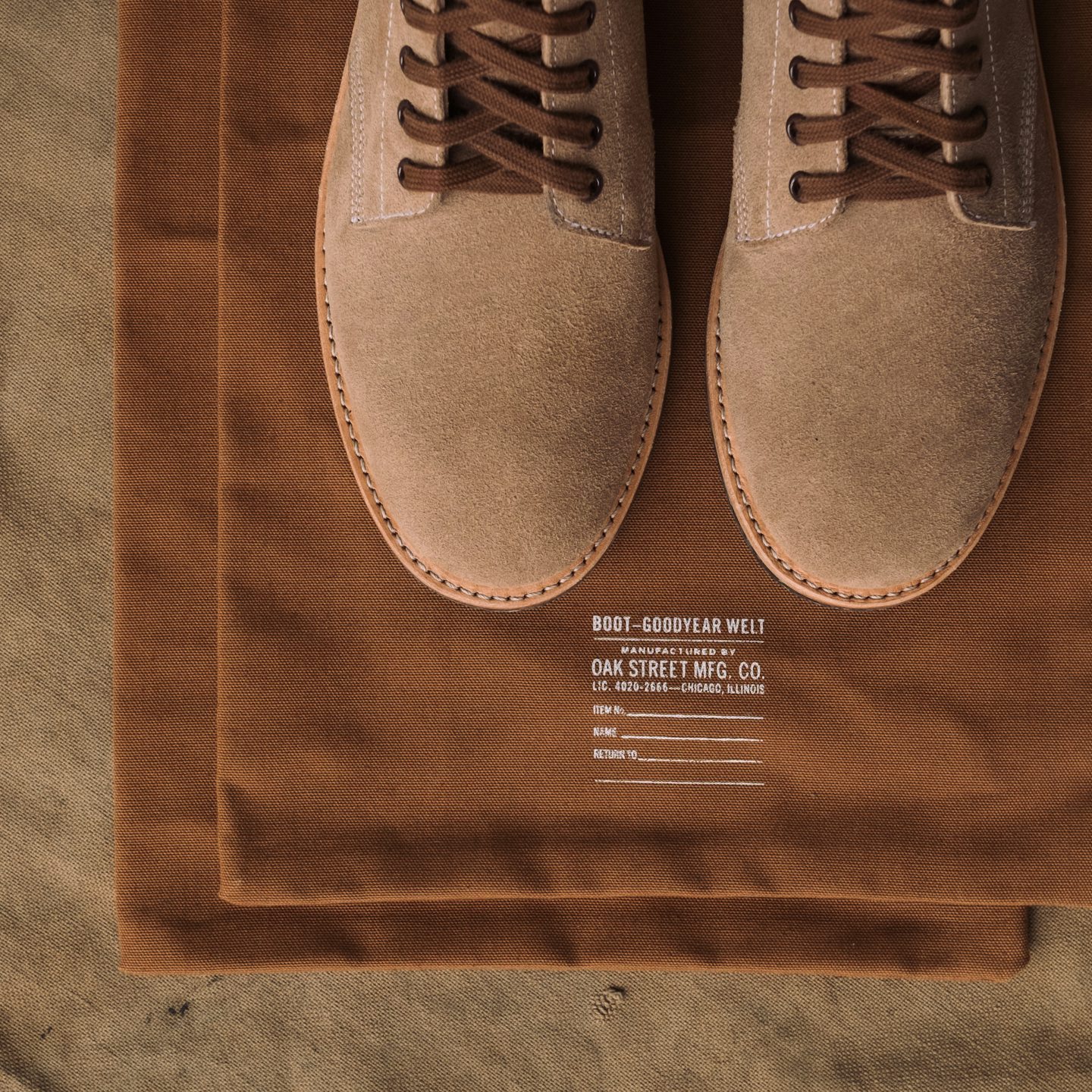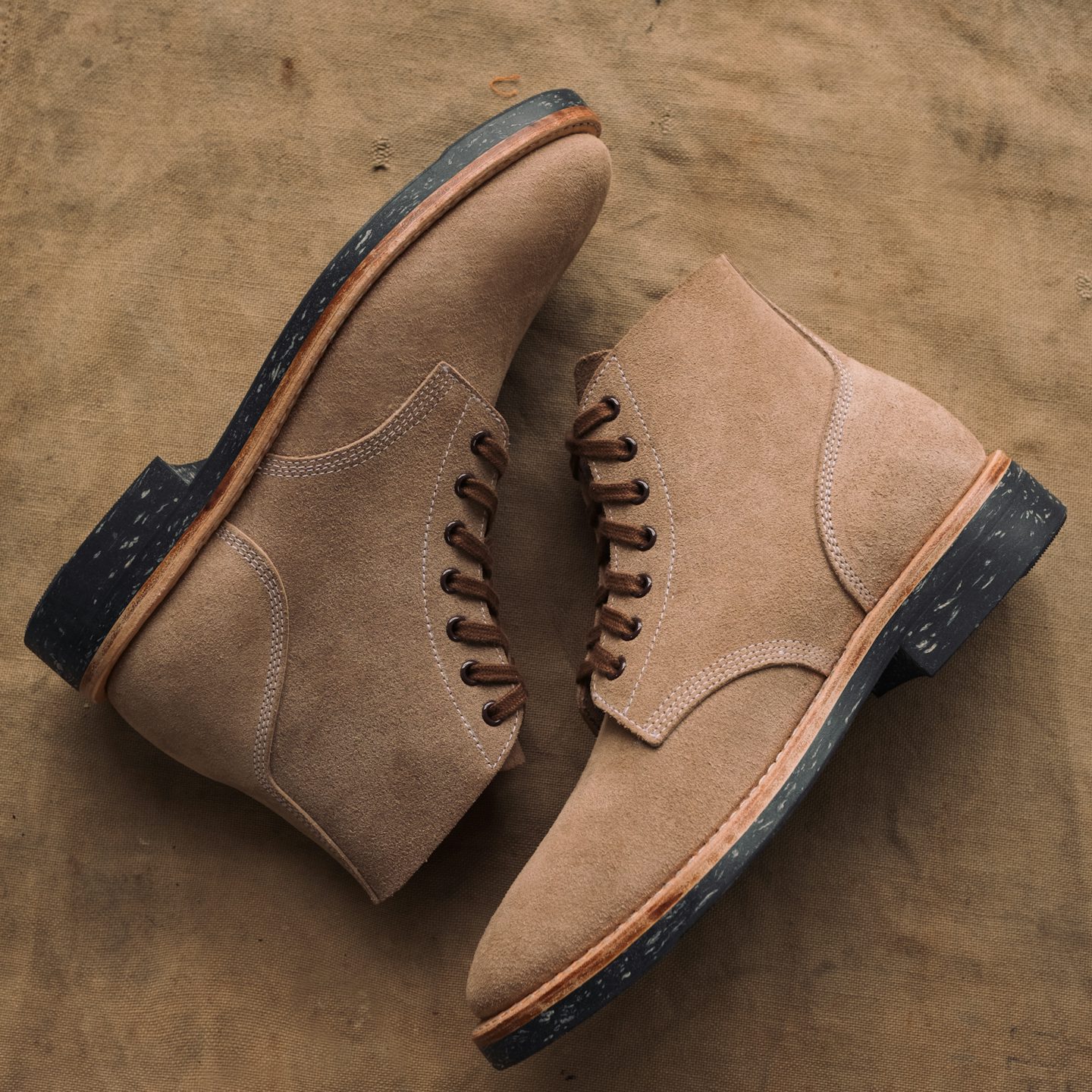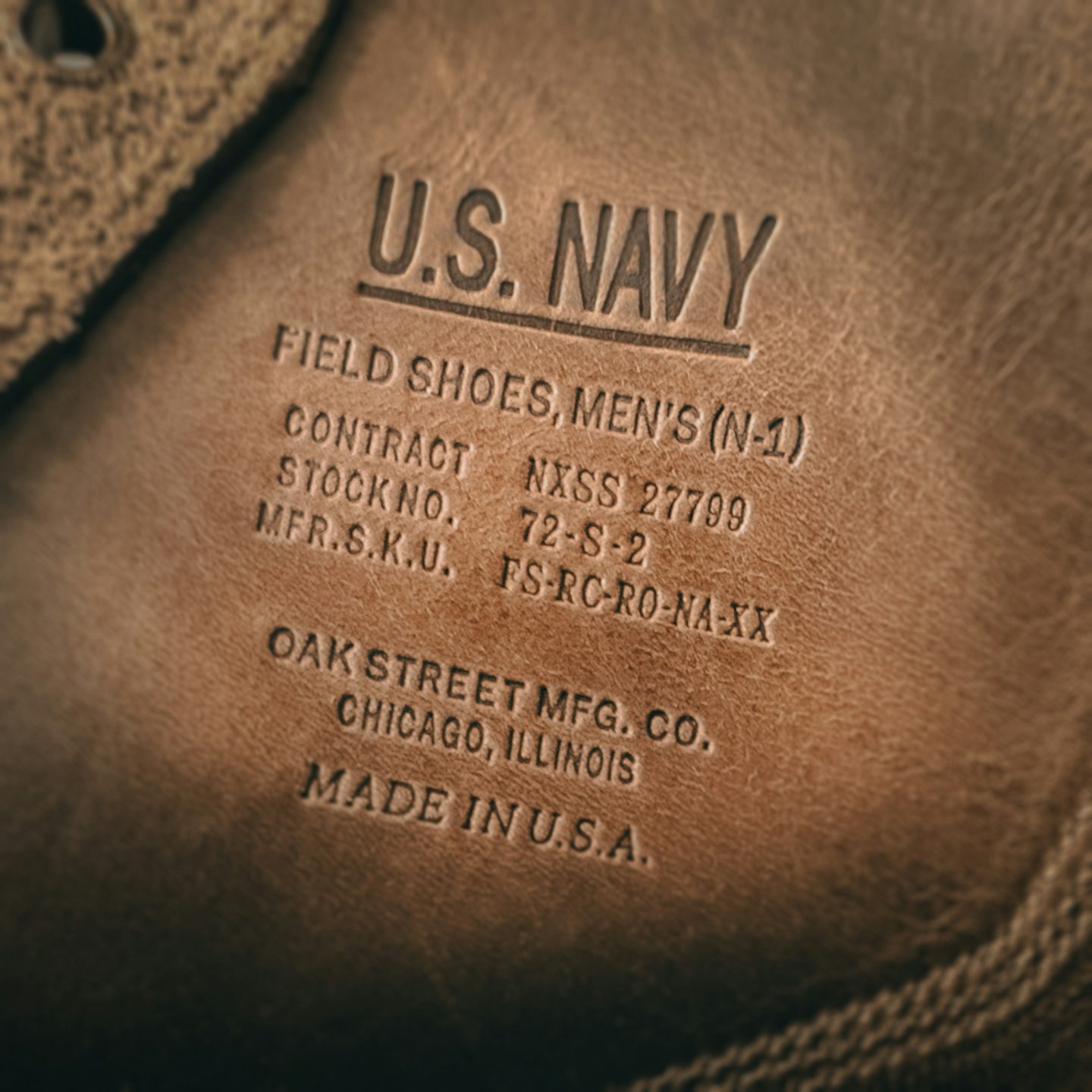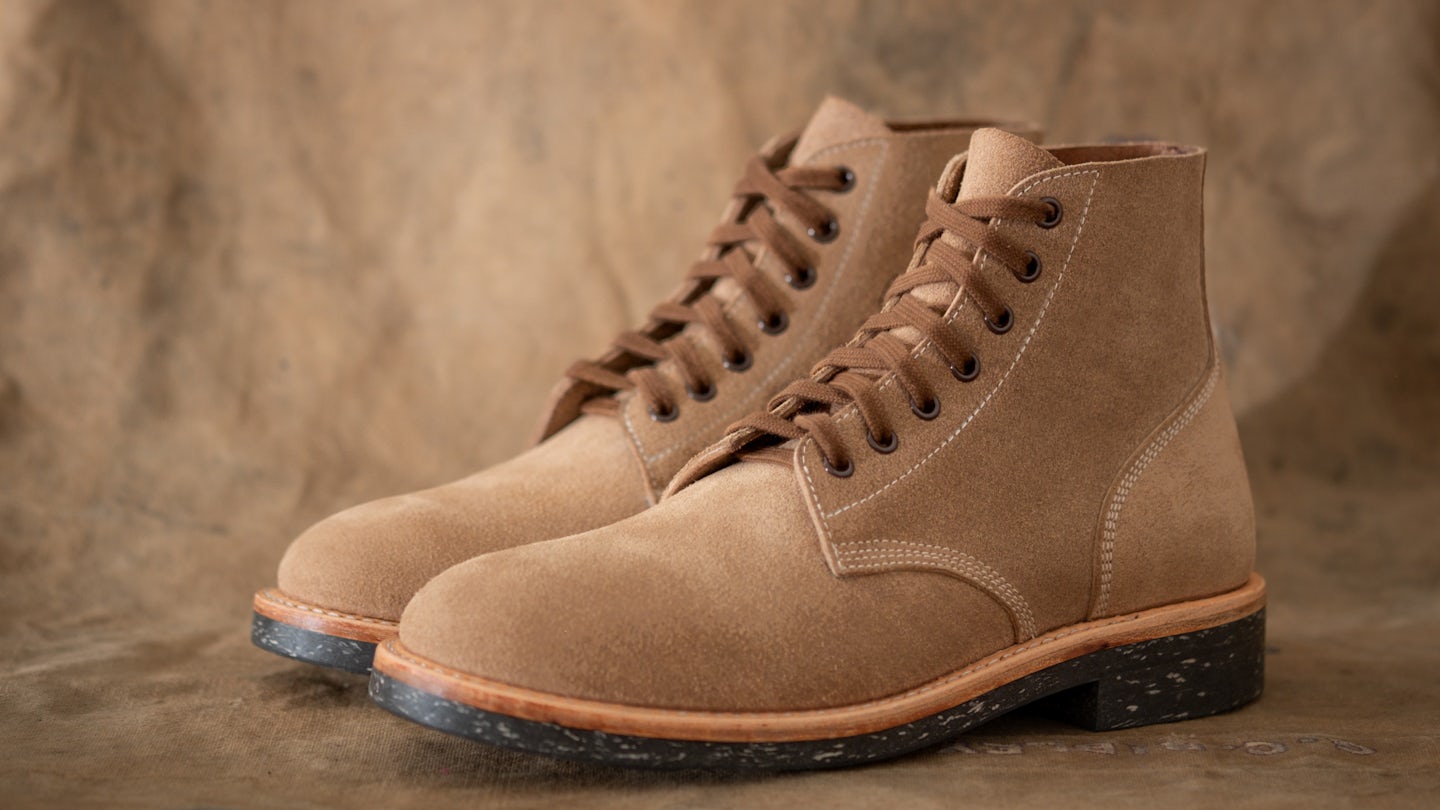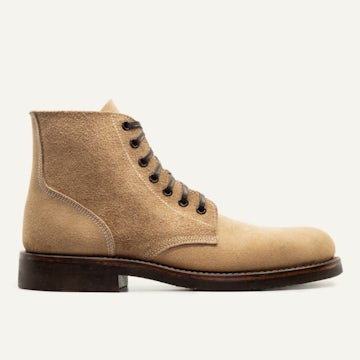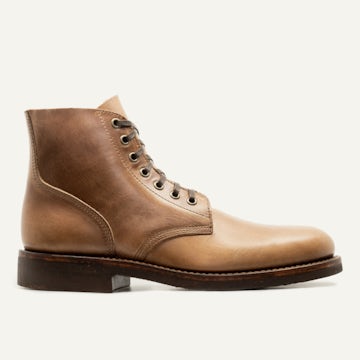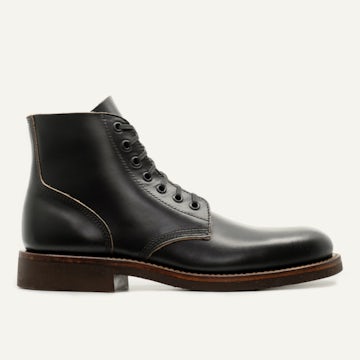By 1943, the U.S. Navy had become a far more versatile force, with shore parties, construction battalions, and amphibious units—roles that had historically been filled by Marines, Army Engineers, and so forth. Thus, the need arose for more robust general-purpose footwear. With time and resources in short supply, it was decided the Field Shoes adopted by the Marine Corps in 1941 (known colloquially as ‘Boondockers’) should be recommissioned as the primary field shoe for Navy personnel, which was then designated under Specification 72-S-2, and issued in 1943 as part of the Navy’s new N-1 uniform standard.
The Field Shoe was developed to withstand amphibious assaults, featuring then-new water-resistant ‘Marine Field Shoe’ leather developed by Horween. Many know this leather as “Natural Chromexcel Roughout,” but Horween’s invoices say ‘Marine Field Shoe’ to this day. Rubber soles were another necessary novelty, but because rubber was in short supply, the specification called for “cork” soles that contained scraps of hemp cord.
Since its debut, the Navy’s Field Shoe would come to have a broad and lasting impact on the design and manufacture of boots of all sorts—including our very own Field Boot. To celebrate its 80th Anniversary, we are reissuing the U.S.N. Field Shoe (N-1), featuring Horween’s ‘Marine Field Shoe’ leather, of course, with an unstructured toe, just like the original. Dr. Sole’s 1122 Raw Cord sole & matching 1102w Raw Cord heel are not only inspired by those of the originals but objectively superior. The sole is finished with the same number of brass tacks and same double rapid stitch as our 1943 reference specimen. We also made sure that all the marks and packaging were period-appropriate and that they were spot-matched for some of the typographic standards used by defense contractors in 1943.
Of course, there is one notable difference between the original and our reissue: Rather than being stamped out by the million, each of our U.S.N. Field Shoes is hand-lasted and hand-finished.


